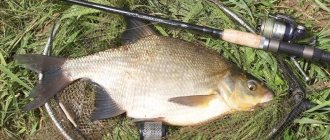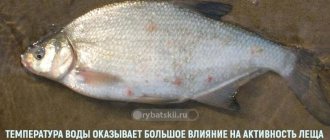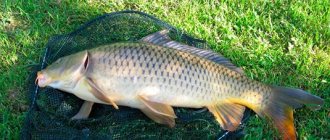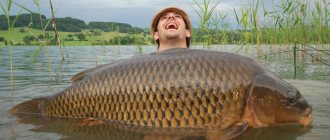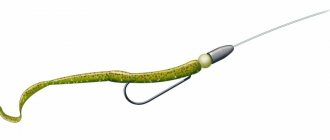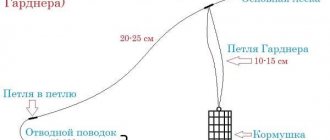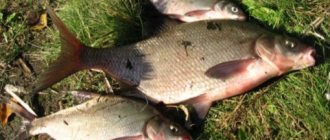Along with crucian carp, bream is one of the most numerous inhabitants of our reservoirs and therefore fishing for this fish is very popular among feeder fishing lovers.
If it is problematic to catch trophy carp or grass carp using classic feeder rigs due to their delicacy, then it is definitely possible and even necessary to catch bream.
It is also convenient that, unlike some other types of fish that represent the ichthyofauna of our reservoirs, it is caught at any time of the year and not only in the open water season, but also from ice, with winter gear.
But we will talk about how to choose catchable feeder gear for catching this fish in rivers and lakes, prepare bait and bait that can provide decent catches.
Where and when to catch bream on a feeder
Feeder gear is the most catchy for bream, this has been proven by the experience of sports fishermen. Fans of catching on spring feeders have their own opinion on this matter, but it is bream and crucian carp that are the most preferred trophies for feeders.
In this case, we are talking about classic feeder rigs, with long leashes and small hooks, because trophy bream is a cautious fish and it is not so easy to catch it.
Throughout the open water season, bream are successfully caught both in lakes and rivers, but still, it is in reservoirs with a current that this fish is especially abundant.
From March, when reservoirs are freed from ice, until November, when freeze-up begins, feeder enthusiasts are actively exploring coastal zones and getting involved in the process of catching very beautiful and strong fish.
The bream is most voracious immediately after spawning, in mid-spring, but in summer and autumn it happily absorbs the treat offered by the fisherman and gets hooked.
In this article we will focus specifically on river feeder fishing, which has its own specifics, especially since amateur fishing and sports competitions using a feeder on the current turn out to be the most effective.
When choosing a fishing point, it is advisable to “tap” the bottom with a marker sinker, but if this is not possible, you should navigate by external signs indicating holes.
Bream chooses deep-sea areas for rest, but feeds in shallow water, so edges and depth transitions are the most attractive from the point of view of finding fish.
If you are located on a steep bank of a reservoir, then most likely there are shallow areas under the opposite, gently sloping bank. Do not look for a point at a long distance, it is rather located 30-40 meters from the steep bank.
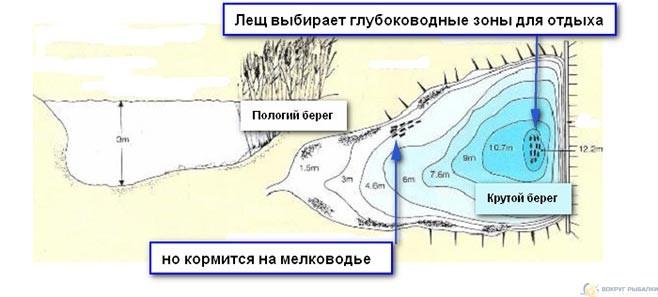
You need to throw the tackle 5–10 meters higher upstream than the fishing point; the exact distance is calculated taking into account the speed of water movement.
Fishing in the current on a bream feeder is tempo fishing, and if you watch a video on this topic, you can clearly see that the pauses between recasts range from 2 to 5 minutes if there is no bite.
Purpose and principle of operation of the feeder
The use of a feeder for fishing has been used for a long time; this fishing item has hardly changed its appearance over the entire period of its existence. Some improvements have been made, the principle of operation remains the same. A feeder for a spinning rod with bait must be selected according to certain parameters; its main task is to deliver the feed to a certain place in the reservoir. After all, good places for catching trophies are not always located near the shore.
Forming the gear involves attaching leashes with hooks on which the catch will be caught. The operating principle of the feeders is simple:
- the product is qualitatively attached to the main fishing line;
- stuffed with enough porridge;
- after entering the water, the contents of the feeder at the bottom will gradually be washed out, attracting the inhabitants of the reservoir with the smell and taste;
- the fish begins to feed, swallows the baited hooks and hooks occur.
All that remains is to bring out the catch and remove it from the hook.
There are different feeders used for catching bream; the choice is influenced by many factors and the personal preferences of the fisherman. An experienced friend will help you understand the wide variety, and it’s worth asking a beginner for advice.
How to choose bait for bream
Spring bait
To fish in reservoirs with a current, it is necessary to add viscosity ; for this, clay from the reservoir and pea flour are used. Fraction : small, but always with the addition of large pieces of live maggots and food bloodworms. Color : light Smell : coriander is the best option Additives to attract large fish: instant corn, crushed peas, scalded maggot
Summer baits
In the summer heat, many complain about a complete lack of bite , but this is not always true. Properly selected bait can attract the attention of bream even in the heat. June: worm, maggot, corn, peas, pasta. July: steamed barley, maggot worms in the form of sandwiches. August: bread, pasta, corn, maggot worm. Temporary decreases in temperature indicators will entail a return of bream to animal types of bait ; vegetable bait should be offered in hot weather.
Autumn lures
In the autumn, bream continue to be actively caught on the feeder; groundbait and bait, as before, should work in tandem in such gear. As the temperature drops, bream will again want “meat” baits. September: earthworm and dung worm, maggot, hominy, bread, steamed cereals. October: bloodworms, worms, less often maggots. November: maggots and bloodworms, plant-based baits will not work. It is important to understand that the bait used in crushed form must be added to the bait.
Winter lures
In winter, bait for bream is very important; it is more difficult for passive fish to attract attention . Therefore, the selection of bait should be approached very carefully. December: sandwiches made from pieces of worms, bloodworms and maggots, less often boiled peas are used. January: bloodworm, worm. February: worm, bloodworm, semolina, peas. You can experiment and try using the dough as bait; at the end of February, bream can respond well to this species.
Feeder bream rigs for fishing in the current
In a stormy river, bream feels at ease, although it still has to be on the alert and fear attacks from a predator such as pike or pike perch. Therefore, feeder equipment for bream is mounted taking into account fishing conditions and time of year.
A river feeder as equipment for trophy bream should, on the one hand, be reliable, and on the other hand, inconspicuous, lightweight and easy to use.
Feeders are selected in such a way that their weight allows them to remain on the bottom after casting, but does not create any obstacles when biting fish.
Important! Don’t forget that when choosing feeders, their weight along with the bait is taken into account.
Installation of equipment
Installation of bottom tackle equipment can be carried out using different methods, but the main thing is to remember that a large number of knots on the bottom significantly weakens it and can cause ruptures and stretching of the fishing line. Conventionally, all equipment methods can be divided into two: with and without a feeder.
Important! To prevent leashes and hooks from tangling, it is recommended to use anti-twisters or rocker arms, which you can make yourself or buy at a fishing market.
In order to make a donk without using a feeder, you should:
- take a load of the required weight and tie it to one end of the fishing line;
- tie a leash with a hook a little higher than the sinker or attach several leashes at regular intervals.
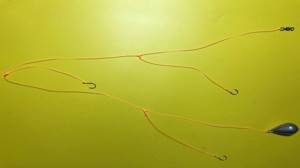
The fishing process is greatly simplified by installing a feeder, which is attached to the main fishing line. The device can be made from wire, which is shaped into a spring, and the edges are filled with lead. The main function of this device is to transport food precisely to the approximate biting location. The feeder is installed on the base line or mounted using a leash. Experienced fishermen advise making “sliding” feeders, while limiting their range of movement using a stopper - small beads.
Bream feeder – reservoir and lake
In lakes and other bodies of water with stagnant water, bream also lives in large quantities, and the specifics of fishing are associated with the use of light feeders and delicate rods.
Feeder and picker on the lake show good results, and using a rig with a net feeder requires less bait.
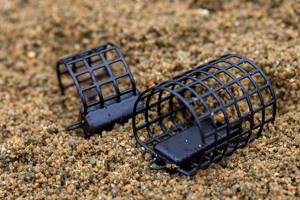
In addition, the bait is made crumbly so that the feeder is released faster, ensuring a high fishing rate. The surface area of a lake is usually larger and finding a fishing spot takes longer than on a river.
The feeder installation for current and still water is generally similar, the only difference is in the weight of the feeders and the power of the rod.
Bream fishing spots
Where to catch it:
- On the rivers. The most promising places are the bends and turns of lowland rivers. The bottom, used by this fish as a shelter, must have descents to depth and form steps, as well as have shell growths. But bream does not live in areas with a sandy bottom.
- On the bays. In this case, as on rivers, most often bream will live on a muddy or clay bottom in conditions of reverse flow and the presence of a place for shelter. It descends to depth in the morning, in the evening it moves up along the edge to a depth of three or four meters, staying closer to the edge of the pits.
- In lakes and reservoirs. In these reservoirs, bream is searched for on deep-sea slopes. The bottom of the lake or reservoir should have algae and flat hills. At night, bream often moves to the shallows of the shore, rich in reeds or other aquatic vegetation, tightly adjacent to the slopes.
Let's celebrate! Regardless of the type of reservoir, the chosen fishing location will not be promising if it is characterized by a fast current.
Assembling feeder tackle for bream
Current feeder equipment consists of:
- fishing rods;
- coils;
- fishing lines;
- feeder installation.
When fishing for bream on a fast river, a braided cord that has no stretch is used, and to increase the shock-absorbing qualities of the equipment, a feeder is used in the area between the mounting and the leash.
Rod
Universal feeder equipment for catching active bream on the river involves the use of rods 3.6–3.9 meters long, equipped with the most powerful tips, simplifying long casting. Each fisherman selects a fishing rod according to his own height and fishing conditions, but with blanks less than 3.6 in length it is more difficult to cast the equipment over a significant distance.

It seems to some anglers that the farther the tackle is cast, the greater the likelihood of finding a concentration of fish. In fact, feeder fishing for bream does not involve exploratory fishing, but attracting fish to a selected point and keeping it in the swim throughout the entire fishing trip, using regular feeding.
Reel and line
With the choice of reels, everything is simple - the spool diameter is 4000–4500, which allows you to conveniently cast and quickly reel in equipment from any distance.
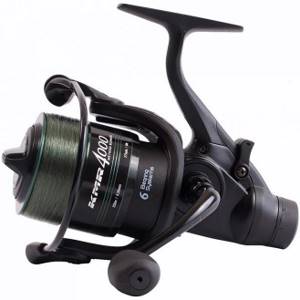
The main line is a braided cord with a diameter of 0.16–0.18 mm, which has no elongation and has high strength, including at knots.
The use of cord is preferable in classic feeder fishing, although rigs are also knitted on separate pieces of monofilament fishing line. But for long casts the cord is inconvenient and dirt and grass carried by the current stick to it.
Therefore, feeder equipment for catching bream in the current is tied on both a cord and a fishing line, it all depends on the fishing conditions and casting distance.
Feeders
Feeder feeders for fishing in the current are selected depending on:
- depths at the fishing site;
- current speed;
- the amount of food that is fed into the swim.
Metal mesh feeders are the most convenient; they have high flight characteristics, reliably hold the bait when casting and quickly “give it away” at the bottom of the reservoir.
By adjusting the stickiness of the mixture, fishermen achieve the consistency necessary for the safe delivery of a new portion of food to the fish.
The metal mesh frame of the feeder is made of thin wire, does not prevent the bait from washing out and holds its shape well, which is important for maintaining the best qualities.
Round nets are more practical, since their streamlined shape reduces resistance to flow and, unlike square feeders, they are held more firmly at the bottom.

It is very important to choose the correct weight of the feeder so that on the one hand it is not washed away by the current, but on the other hand, when the fish first touches the nozzle, a notch occurs due to the weight of the feed.
It is better to spend a little time selecting a feeder of the right weight for the existing conditions than to create problems for yourself already in the process of fishing.
If the feeder is too heavy, the fish simply will not be able to move it and the hooking process will become more difficult.
A light feeder will be carried away by the current, but it is important that after each cast the equipment is placed in the same baited place.
The gear for catching bream on a feeder with a feeder is distinguished by the necessary strength, although shooting due to snags on grass and stones is inevitable, and a supply of feeders is needed so as not to spoil the fishing.
When fishing at a significant depth of 8–10 meters or more, it is better to use closed-type feeders because if they are immersed in water for a long time, the bait will not wash out of them.
Important! To catch bream at a super long distance, use “bullet” feeders loaded from below; they fly perfectly and hold the food reliably.
Hooks and leashes
Unlike fishing for crucian carp on a feeder, fishing for bream involves the use of leashes 1.5–2.5 meters long, which are knitted from monofilament fishing line with a thickness of 0.08–0.14 mm.
But while fishing, there is a chance to catch a solid specimen that can break thin leashes. To ensure the reliability of the tackle and absorb the jerks of trophy fish, feeder rubber is used - feedergum, which has elongation and elasticity.
Bream mounts
As already mentioned, bream is a shy fish and to catch it they use subtle but sensitive classic rigs. On lakes and rates where there is no strong current, they fish using both method and flat-method rigs.
If you fish using a feeder method, then the appropriate installation is selected; with classic feeders for catching bream, use:
- paternoster;
- asymmetrical and symmetrical loop;
- Gardner loop;
- online installation
That is, the entire range of classic feeder rigs is used for catching river and lake bream, and very successfully.
Along with small bream, a successful and experienced fisherman also finds trophy specimens weighing 2 kilograms or more on the hook. Naturally, it is very difficult to bring such a fish onto a thin leash, even with a high-quality feeder.
Therefore, a piece of feedergum 10-20 cm long is used as an insert between the installation and the leash. This can also be a twist of feeder rubber, tied to the outlet for the leash on the installation and the leash itself.
If treated with care, leads from the feeder are used many times, but the leads need to be changed at the first sign of a dull hook, because it must be sharp for better hooking of fish.
The paternoster is the most preferable when fishing for bream in the current, but asymmetrical and symmetrical loops also show good results.
Fishing technique with a feeder
When fishing with a ring or with another type of feeder, it is important to follow the fishing technique. The main points are:
- complementary foods are thrown into one place;
- When casting, the rod must be vertical relative to the reservoir;
- As soon as the feeder goes into the water, the form is placed on the stand, not forgetting to loosen the clutch.
Having done everything, all that remains is to wait for the bite, for this they use bells, a float for sagging, and in the dark the whip is equipped with a firefly.
Fishing differs slightly in where the water area is fished from.
From the shore
To catch bream from the coastline, feeder rods, pickers are used, even a float rod with a feeder is suitable. All steps are carried out exactly as described above, only the tension of the fishing line is adjusted so that at the slightest movement of the feeder you can see a bite.
On the current
The feeder for fishing in the current is taken heavier, at least 80-100 g, casting occurs in the same way, only the bite is observed by the float for sagging or directly along the tip. Casting is carried out identically, but the washout of food should be checked more often.
From the boat
It is better to offer food to bream from a watercraft using the fishing ring method; it will be much easier to catch bream this way. To do this, they make their own tackle, which they carefully lower next to the boat and wait for bites.
A do-it-yourself feeder will help when catching bream in closed reservoirs; on the river, more purchased options are used, but some craftsmen manage to produce such an element of equipment at home.
You can ask your question to our author:
Choosing a bait mixture
Only correctly selected bait for bream when fishing on a feeder will allow you to achieve large catches. This is the most important moment when preparing for fishing and a lot depends on it.
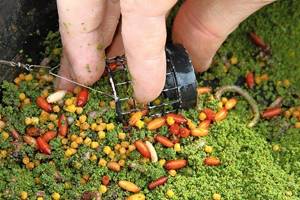
Unfortunately, not every fisherman is aware of the importance of selecting the right components, but experienced sports fishermen make bream mixtures from several types of store-bought bait, adding liquid components that increase the attractiveness of the food.
Bait for bream on the river on the feeder should have a minimum of dust fraction, because it will attract small things that instantly scatter the food from the swim.
The feeding table should be a dense carpet and under no circumstances should it be “smeared” over a large area. Only when catching bream using the method in search mode do they not adhere to this rule.
The secret component of catchable bait for bream is ordinary peas, boiled or twisted in a meat grinder and steamed in boiling water. Bream is a big fan of peas and during periods of active feeding, it is this grain in processed form that forms the basis of the bait program.
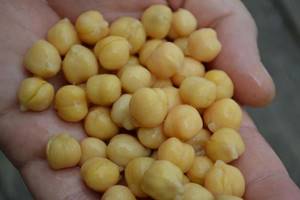
The technique of catching bream on a feeder involves feeding bait to the same point, so that after several dozen recasts, an attractive spot of peas appears in the swim, which not a single bream will pass by.
Even when using expensive branded baits, pea puree will only increase the nutritional value of the bait mixture and its attractiveness to fish.
In addition, it is desirable that the bait for bream include:
- ground bread crumbs;
- active biscuit;
- corn flour.
The groundbait fraction must be even, so when preparing it, you must have a sieve on hand through which the dry mixture is initially “punched.”
In addition to peas, bream like sweet aromas, so ground bakery waste will significantly increase the value of bait for fish.
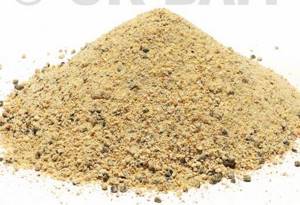
It is advisable to make the color of the bait dark, or to match the color of the bottom layer of the reservoir, so as not to scare away the bream from the treat on the hook.
As for the manufacturers, it is necessary to note the feeder and match baits Browning and Sensas, which have long proven themselves to be the best. Domestic baits “Dunaev-Fadeev” or “Minenko” are still inferior in quality to imported analogues, although they are cheaper.
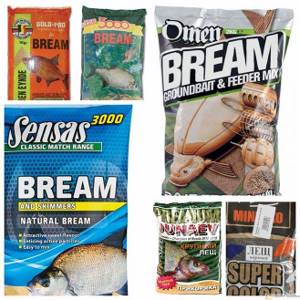
Molasses is used as a liquid component, as well as liquid additives and liquids with a smell:
- almonds;
- cinnamon;
- nutmeg;
- coriander;
- fennel;
- anise.
Animal components in the form of:
- bloodworm;
- maggot;
- chopped worm.
Before adding the same bloodworm to the bait, you should mix it with dry store-bought clay, push it through a fine sieve and flavor it. The presence of animal components in the bait allows you to keep the bream at the fishing point for a long time.
Important! To successfully catch bream in a river, you need heavy, sticky, high-calorie bait that can keep the fish in the swim and attract trophies.
Feeder bait
This fish loves light-colored bait most of all. And for cold water when fishing in autumn or spring, it is best to make bait based on bloodworm extract. As a feeder bait, you can use both already prepared dry mixtures for complementary feeding purchased in fishing stores, and those made by yourself.
Store-bought bait is an excellent option for novice anglers unfamiliar with the habits of bream, as well as for people who do not have enough time to prepare for feeder fishing. Although this option is also suitable for connoisseurs of homemade recipes, as it is an excellent base that has a rather rich aroma.
If you buy store-bought bait, then you should not skimp on the products of popular manufacturers - Dunaev, Sensas . Choose fruity flavors as these are what fish like best. They definitely contain a balanced composition of all elements. Inexpensive bait of unknown origin can contain anything.
When purchasing bait, you also need to take into account the body of water where you will be fishing. If this is a river, then it is advisable to purchase a special binder for the bait. At the time of purchase, make sure that the packaging is marked “for river”.
The cost of bait, as a rule, is not very high, but you can not be lazy and make it yourself. No special culinary skills are required for preparation. In warm weather, you can successfully fish with bait, which is done in the following sequence:
- In a container over low heat, cook pearl barley and peas in a ratio of 2:1. The cooking procedure takes approximately two hours.
- Afterwards, barley grits are poured in an amount equal to half the prepared mixture, and the mixture is allowed to boil for about another 15 minutes.
The finished bait can be flavored with sunflower oil, but this is not necessary, since the composition has a strong odor.
Due to the fact that the base contains a large fraction, trophy bream immediately begins to feed and very quickly becomes interested in the bait on the hook.
Bait that burns during cooking reduces all efforts to zero. The procedure takes a lot of time and requires regular monitoring and constant stirring.
Baits for bream
The choice of bait for catching bream on a feeder depends on the time of year. Catching this fish on an English donkey in the fall and spring will be successful when using a bait of 2-3 bloodworms, but in the summer months boiled peas and fermented corn work great.
Catching bream on a feeder in July or August makes it possible to diversify the diet of food offered to the fish as much as possible, and plant components predominate in it. In summer, bream feeds actively and the bait should be larger in size, and it does not matter whether it is peas, or a bunch of worms or maggots.
Bream can be caught on a feeder even in winter, but due to the low activity of the fish, only one bloodworm or maggot clings to the hook. When installing the nozzle, the tip of the hook should be left open, and this is a fundamental requirement. A free tip increases the chances of reliably hooking a fish at the slightest touch to the soft tissues of the lips.
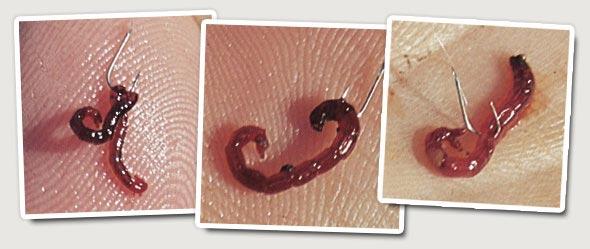
Fishing for bream using feeder gear is becoming very popular in various regions of our country. The accessibility and catchability of the feeder allows not only athletes, but also amateurs to catch truly trophy fish using such equipment.
Learning how to tie a rig with a feeder is not that difficult, so many domestic fishermen already have gear for a bream feeder.
